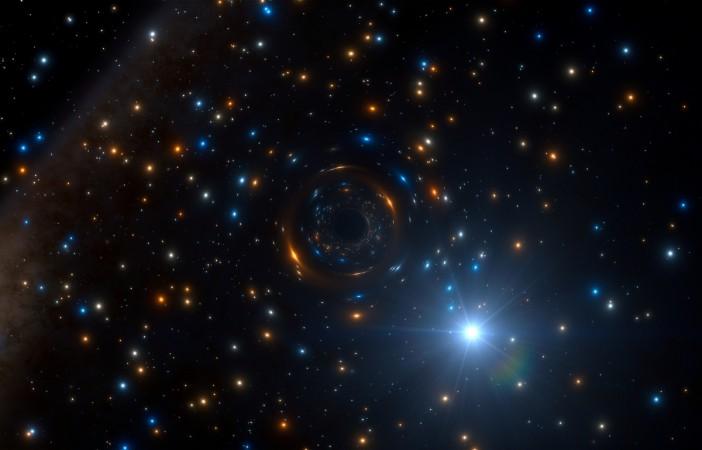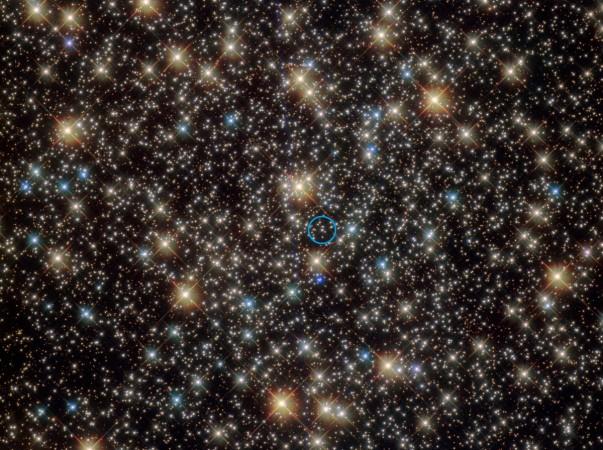
Astronomers have spotted an oddly behaving star in the globular star cluster NGC 3201, which has led to a more significant discovery of a secret black hole hiding in the Milky Way galaxy.
Astronomers using ESO's MUSE instrument on the Very Large Telescope in Chile observed that the mysterious star, which is slowly turning into a red giant, was being flung back and forth at remarkable speeds of several hundred thousand kilometres an hour, with the pattern repeating every 167 days.
Further analysis revealed that this extraordinary movement of the star, discovered in the cluster NGC 3201 in the southern constellation of Vela, was in fact caused by a "lonely" black hole with nearly four times the mass of the Sun. The findings were detailed in a study, published in the journal Monthly Notices of the Royal Astronomical Society.
According to the researchers, the latest discovery is the first time when an inactive stellar-mass black hole has been found in a globular star cluster by directly detecting its gravitational pull. Astronomers expect the new findings to help them understand the formation of star clusters, black holes and the origins of gravitational waves better.
"It was orbiting something that was completely invisible, which had a mass more than four times the Sun — this could only be a black hole! The first one found in a globular cluster by directly observing its gravitational pull," the study's lead author Benjamin Giesers from Georg-August-Universität Göttingen, Germany, said in a statement.

Aided by their large masses and great ages, globular star clusters -- dense collections of tens of thousands ancient stars orbiting most galaxies -- are thought to have produced a large number of stellar-mass black holes as massive stars within them explode and collapse over the long lifetime of such clusters.
This is the first time that astronomers have detected an inactive black hole at the heart of a globular cluster as it is not consuming matter and is not surrounded by any glowing disc of gas, astronomers said.
Based on observations of the star's properties, the researchers determined it to be about 0.8 times the mass of the Sun. The mass of the black hole, on the other hand, is estimated to be around 4.36 times the Sun's mass.
"Until recently, it was assumed that almost all black holes would disappear from globular clusters after a short time and that systems like this should not even exist! But clearly this is not the case — our discovery is the first direct detection of the gravitational effects of a stellar-mass black hole in a globular cluster," Giesers said.

















